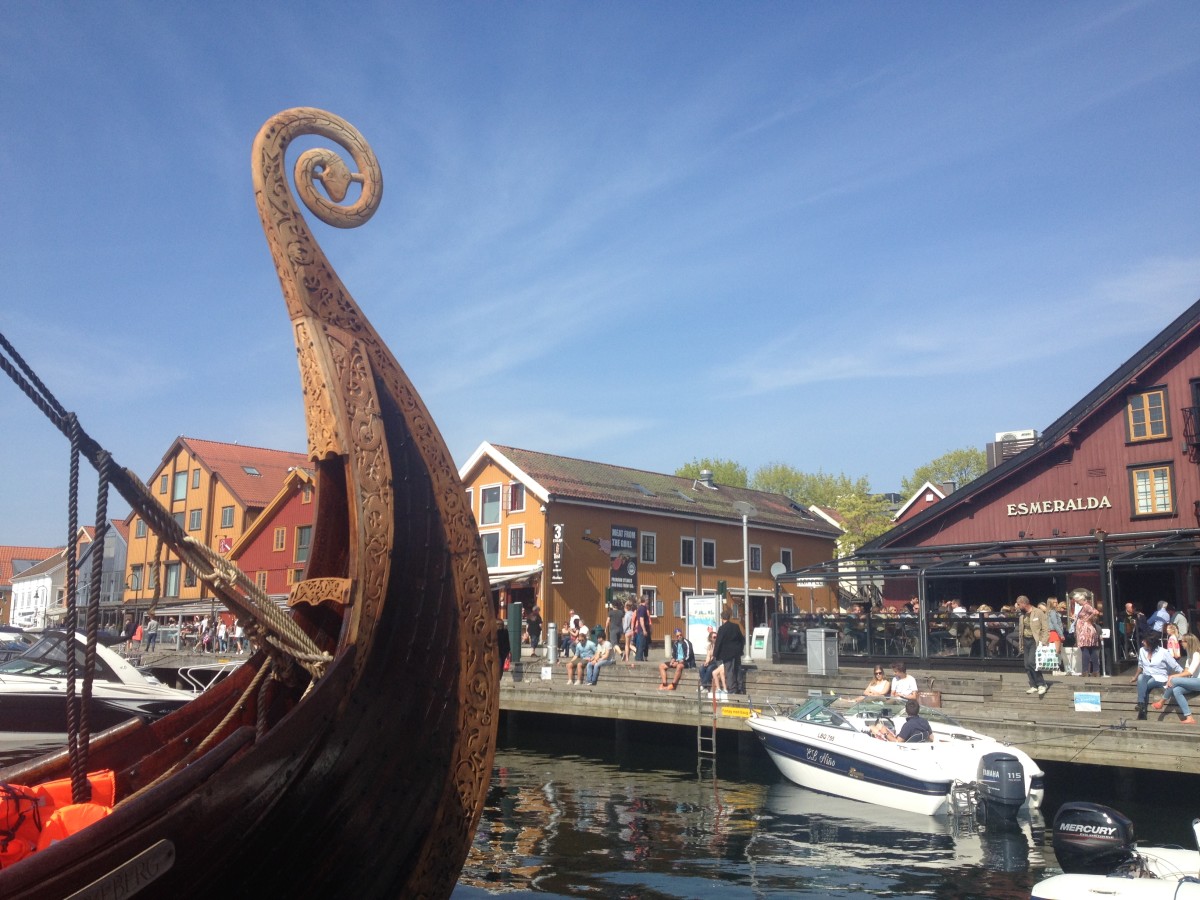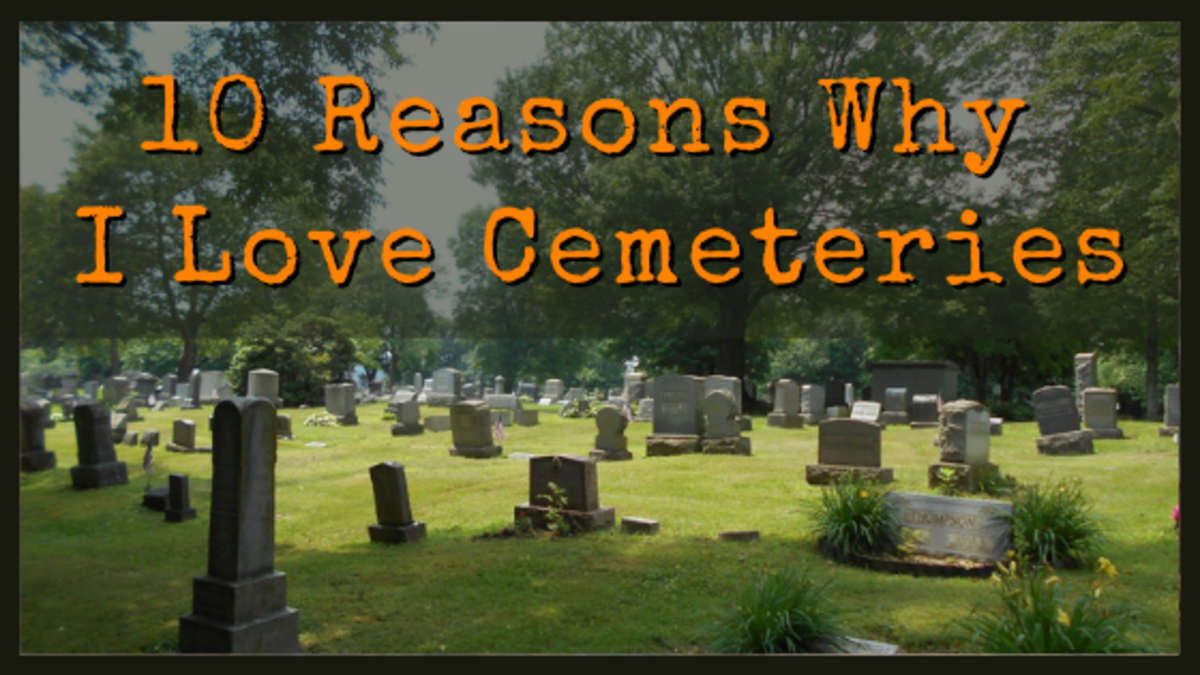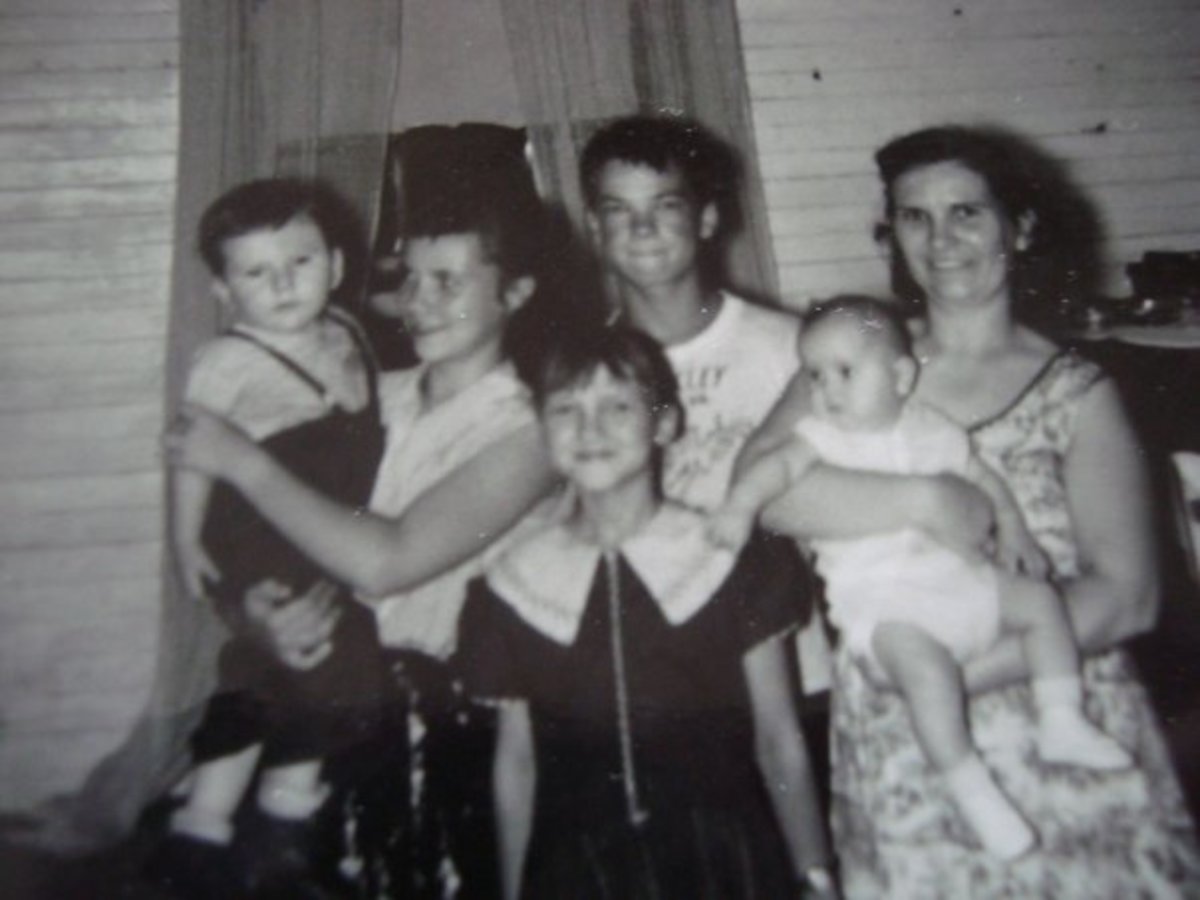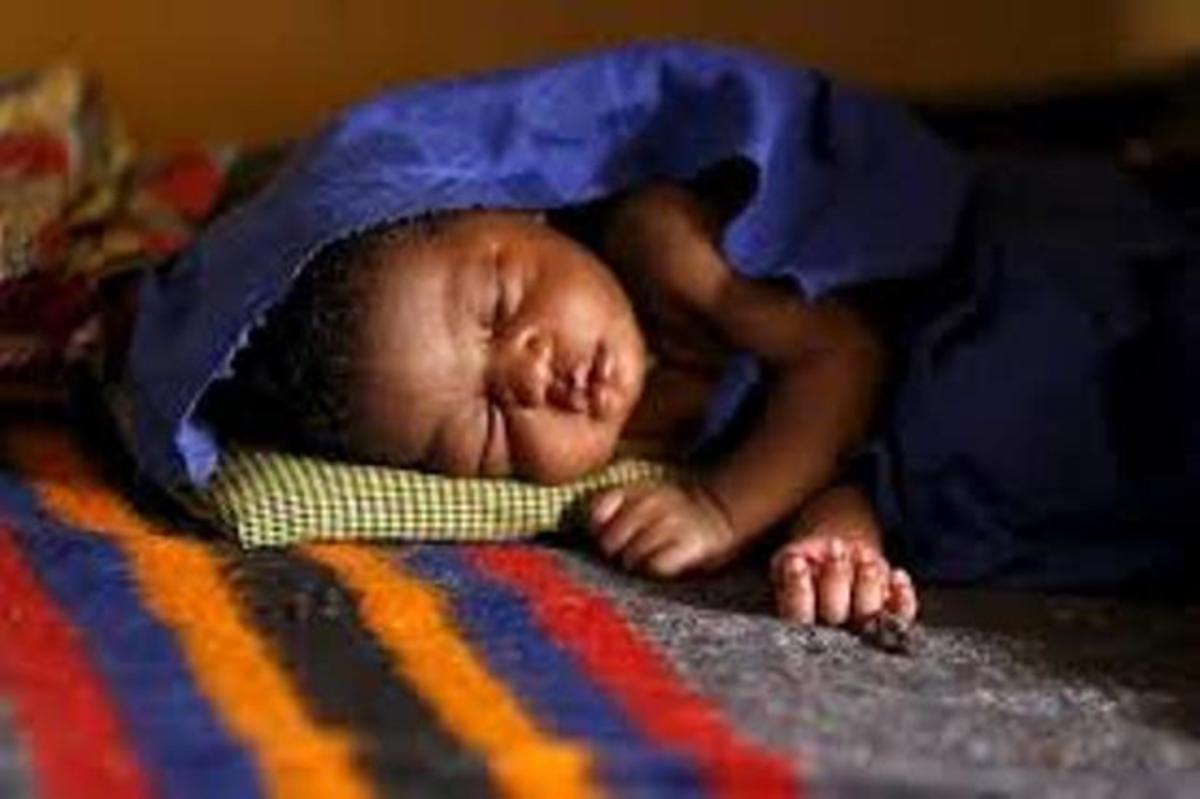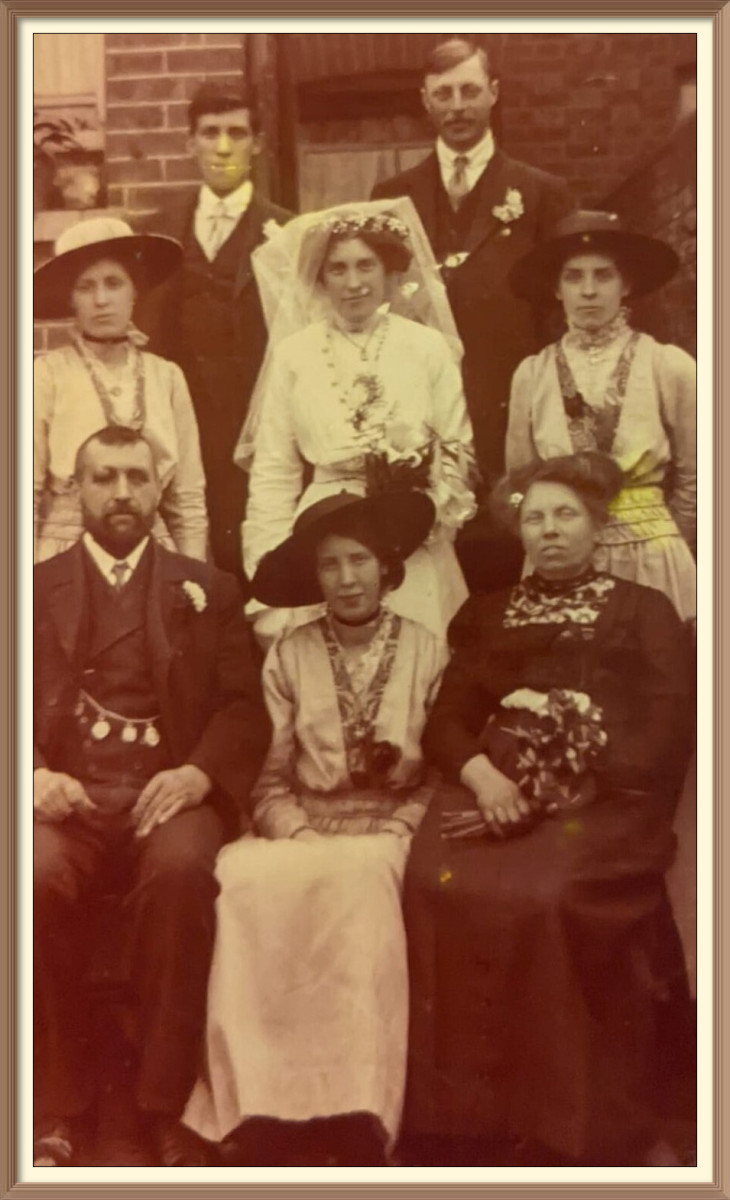Visiting the Forgotten Dead - Tale of an Abandoned Cemetery
The following is a creative non-fiction piece, only because the names are changed. While going through family records in an old box, I came upon an old cemetery deed belonging to my great grandfather. When we went to investigate the cemetery, I was in for a shock. Perpetual care is just another meaningless phrase.
Old Grave Stone
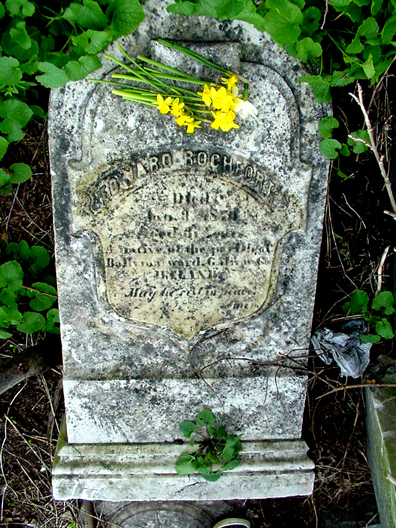
The Forgotten Dead
I’ve never been to Ireland but this is the Ireland of my dreams; the soft rolling hills, the gnarled trees, rock daffodils and clouds scuttling overhead. A graveyard, of course, because it’s all about the past, dead relatives and crumbling stables, the horses long gone. We’re looking for my great grandfather’s tombstone in these derelict hills with a view of the city. We’re in the city but it looks so far away.
We came once last summer, my sons and I. But it was a jungle then, an impermeable thicket of sumacs and briar, a dense wall of trash plants and heat set in the middle of a golf course. The golfers putted around in their carts and gave us dirty looks, suspicious of hikers and oblivious to the most neglected cemetery in Baltimore. It was not like when I was a child and we ran wild at Mt. Pleasant out in the county, golfers chasing us waving nine irons like irate peasants in pastel pants. They had a right to chase us. We were wild brats running the hills with youthful anarchy, hoping to be chased, really. It was fun.
Last summer I approached a staring golfer, a young businessman with symmetrical features and broad shoulders, nearly half my age. And how successful was he, golfing in a place like this where the greens spread wide in a faltering neighborhood near an abandoned shopping center with boarded up windows and drifts of litter. His buddies looked at me like I was crazy when I explained our mission. But the guy I spoke to, black Irish with dark, wavy hair, caught a glimmer of interest in his pale blue eyes.
“I remember we played out here when I was a kid.” He looked at the raggedy thicket as if he’d forgotten about it, as if it had become invisible to him but now, suddenly, reappeared in a sweep of memory.
“We used to run around in there. I remember stumbling over gravestones back in the trees. It was weird.”
“So it’s been like this for a while?”
“Twenty years at least. And you think you’ve got someone in there?” He seemed amused and baffled.
I held up a photocopy of the deed.
“Well, good luck with that,” he snorted.
After the golfers, we found a clutch of old white men sitting on benches in that poor black neighborhood. They sat on the hilltop and watched people play golf. One remembered the cemetery.
“All Irish in there,” he said, smoothing an out-of-date moustache. “Didn’t they move them?”
Another spoke up, shifting his oxygen tank. “Yeah. Like they said they moved the black cemetery over there when they built Two Guys.”
Two Guys was a long defunct predecessor to Wall Mart, now the empty trash strewn shopping center to the east. I remembered the story and how no one believed that all the corpses were actually moved, but that they were all asphalted over and my parents would never shop there because of that.
A mild argument broke out among the old men over the disposition of dead bodies. Factions formed along lines of trust and who believed developers, newspapers, or the government.
“You really think they cared about dead black people?” the oxygen tank man said and called his pals a bunch of hypnotized chickens. He then inquired after my dead relatives. But he became dismissive when the last names rang no bells (“Oh, right, they’re Irish.”), and fell back to argue pleasantly with his buddies.
Irish in America
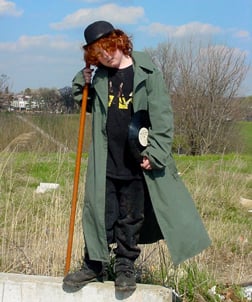
So we come back the next spring, a chill in the air, a suggestion of leaves on the trees and we wonder what happened to the jungle. Cypress trees mourn the dead. Dry grass humps in soft mounds and the city shines white in the distance like a city in a fairy tale.
A big, old stable that once belonged to Johns Hopkins stands at the western edge, crumbling cement and rotten wood with a stone foundation. A bulging stone wall looms over a pile of mulch that steams in the meager sunlight. My youngest son stands on top of the wall. His long, curly red hair poking out from under a bowler hat and his big black boots remind me of the Ireland of my dreams. When he jumps off the wall, his sage green coat opens like wings.
“Conner!” I scream as he becomes airborne, as if my voice can stop him. The wall must be fifteen feet high.
But he lands on the mulch pile and rolls down, the bowler hat still firmly on his head. Where did he get that thing?
The older one, Thomas, comes around the side of the wall carrying a bicycle wheel and a walking stick. He informs me with a gleam in his eye that a wonderful dump full of birdcages, coffeepots and broken mirrors lies at the bottom of a nearby hill. But we are on a mission.
Someone has moved the tombstones from their usual military line. Impressive monuments of the dead rich poke graceful towers against a distant backdrop of brick rowhouses. Circling these, simpler gravestones lay flat on the lumpy ground. Giant stone flowers with the monuments as stamens and the lesser ones as petals leave the actual graves unmarked. This is not the work of hooligans but some sort of ordered vandalism, the work of someone with heavy machinery.
Search for Great Grandfather
Last summer, I called the church affiliated with the cemetery, St. Vincent’s in the city with a liberal, educated congregation. The woman who answered the phone spoke in echoes.
“I’m trying to find the grave of my great grandfather, Thomas Columbus Boyle, who is buried in your cemetery.”
“Cemetery?”
“An old one.”
“A cemetery? There’s a parking lot outside the church and a little park. But we have no cemetery.
“It’s in the middle of Lake Clifton Golf Course out along Goodwell Road.”
“I’m sorry, ma’am, but we have no cemetery.”
“Well, you do. You just don’t know it. Check your records.”
Homeless men hang around that charitable church full of educated liberals. The congregation gives them army blankets and baloney sandwiches. She was used to dealing with nuts.
“I’m sorry but I can’t help you.”
I wanted to scream at her, accuse her as a representative of the church of callously neglecting dead parishioners. Oh, it was fine to take their hard-earned money and didn’t I have the deed in my hand, a hundred years old, that looked like it had been soaked in tea.
“What have you done with my great grandfather?” I wanted to yell, reach through the invisible magic of electronic communication and grab her skinny educated, liberal neck. But I did not.
Fallen Head Stone in Abandoned Cemetery
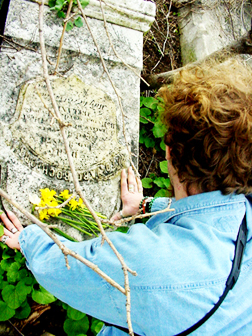
My great grandfather died in 1909. Obituaries informed me that he built the base of the Wells McComas Monument on Gay Street then became a police officer and arrested the "notorious penny forger."
I have a fuzzy picture of him copied from microfilm with his big moustache and old timey policeman’s helmet like British Bobbies wear. I took a photo of his old house in a neighborhood that looks like a war zone with disintegrating curbs and people wandering the street like zombies. But my great grandfather’s house still stands neatly intact with smooth formstone and the address in stained glass on a transom like it was in 1909.
We fan out in different directions to read each and every tombstone; all Irish immigrants, their beautiful names shadowed with dirt and moss: Shanahan, O’Niel, Gallagher and Ryan. Native of County Cork, Galway and Kildaire. Immigrants all, they crossed the daunting ocean, worked their way toward a life where they could afford fine marble tombstones now tossed in piles, their final resting places forgotten.
I pointed out dates to Conner; people born in the1820’s come over, perhaps, during the mid 19th century Potato Famine. The family savings handed over to save the best and the brightest while their countryside lay littered with starved children dead in ditches, their little mouths stained green from eating grass.
“And the Presbyterians offering watery soup and stale bread to mothers who’d renounce their religion while the beef they raised was sent over to England.” My voice catches with the story told long ago in somebody’s basement kitchen where the old folks drank beer out of juice glasses.
Connor steps back. His hat blows off and rolls away bouncing in the breeze and his shocking hair roils up like fire.
“What’s a Presbyterian?” he asks.
I don’t know what came over me; sorry for shooting my mouth off like that and the sweet, sad face in front of me, the boy who loves horrible stuff as long as it’s fiction, blanching in the face of such sudden poison.
“Just people,” I say. “Anyway, the Irish came over in droves back then. That would have been Thomas Columbus Boyle’s father.”
Conner wanders off to find a pile of broken bricks and other rubble. Taking his best pitching stance, he hurls bricks at the stable wall.
Diligent Thomas works his way across the cemetery, taking forever, reading every stone caught in briar and weeds and according the poor dishonored dead that small respect. He holds the bike wheel on one shoulder. The sun catches his hair and glints off the metal bicycle spokes like a postmodern halo.
We prowl the stones, occasionally losing sight of each other among the undulating hills of dried golden grass and brown stalks of last years Black-Eyed-Susans. The cemetery is bigger than it looked at first. Sun sliding toward late afternoon, I think we won’t find it. I try to remember Thomas Columbus’s children: Howard, Robert, Catherine, Albert, Blanche and Angora plus the dead children whose names I’ve never heard.
My father used to take me visiting the old relatives in their narrow row houses, shades pulled down in the summer, and the rooms dim and cool; a Blessed Mother statue in a shadowy corner smiling down on a glassful of wilting roses. I still remember their low voices and the soft titter of their laughter; soft-spoken gentlemen with lumpy hands and gray wool sweaters and the old ladies with their thin-skinned soft white arms. The smell of newspapers and soup, folded linens in an old icebox and cups of sugary tea.
Sometimes they served RC Cola and I used to think that the initials stood for Roman Catholic. People would stop in, relatives all, and Auntie explaining how we were related and who lived with whom during the Depression. She told me about the Baltimore Fire in 1904, how she stood on the wide, broad steps of St. Vincent’s and felt the church steps tremble when the paint factory blew. She was just a girl, she said. But in later years, when I looked at her funeral prayer card, I saw she had been twenty-six in 1904 born in 1878 as she was. And what happened to Howard they never said, something awful, poor Howard long gone when I was a kid and they still had a coal bin in the back of the basement. But Daddy never brought me here.
We’re ready to give up. Connor found his hat and has rejoined us, sticks and leaves in his hair, mulch stuck to his pants like fur and he is thirsty and bored and wants to go home.
“We’ve read every tombstone,” I say. “Well, we tried.”
There are no paths here, no carriage roads for the long ago bereaved, no trace of their movements, only their tears.
But there at the southern edge, beneath a thick trunked cedar twisted with thorny vines that sprout pink buds lies more fallen gravestones. We use our walking sticks to clear the briars and prop them up by wedging the sticks in the gnarled branches of the cedar tree. Thomas sees the name Boyle, barely makes it out, covered as it is in crumbled brown leaves and dirt. My heart jerks as he points it out.
But it’s not Thomas Columbus. We never find that one. It’s TC’s father, Edward, native of County Galway, Ireland who came so far to have his beautiful old gravestone thrown in a heap like so much rubbish. As my heart lurches and my eyes burn with tears, I wonder how long it’s been since someone wept for Edward.
I would have liked to come here with my father.
A group has formed to research and restore the St. Vincent's Cemetery in Baltimore, Maryland. Below, find a link with information, and photographs on how a dedicated group has banded together to save this old cemetery and honor the forgotten dead.
St. Vincent Cemetery Research and Restoration
- St Vincent Cemetery
St Vincent Cemetery, Baltimore, MD, research and restoration.



